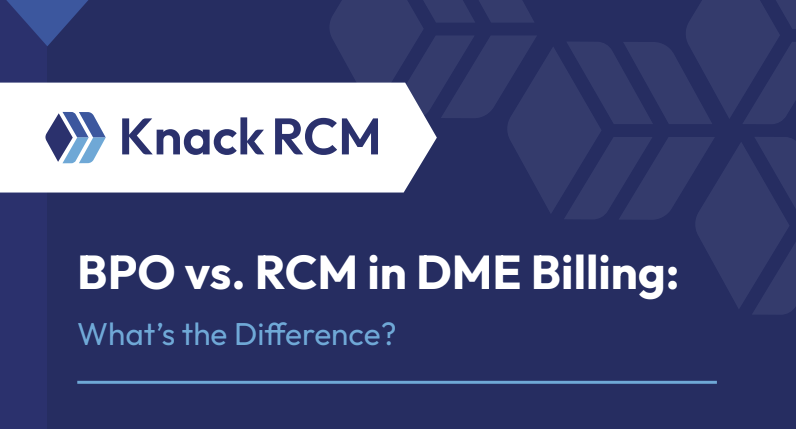Revenue Cycle Management of Tomorrow: Advantages of a Scalable Global Workforce

As healthcare organizations continue their financial recovery, they are also embracing new opportunities to enhance efficiency and resilience in revenue cycle management. With labor markets stabilizing and advancements in digital transformation, providers have more options than ever to streamline medical billing, reduce costs, and improve financial outcomes. By leveraging a scalable global workforce, healthcare organizations can address persistent revenue cycle challenges while positioning themselves for long-term success.
The most pressing revenue cycle challenges
One of the most significant opportunities in revenue cycle management today is reducing claim denials, which can drive significant financial improvements. With more than 40% of healthcare organizations reporting an annual revenue loss of over half a million dollars due to claim denials. Eighteen percent said those losses have reached two million dollars at their organizations.
In the same survey, 44% of healthcare leaders said “specific payer challenges” were their second top revenue cycle concern. Even for seasoned revenue cycle professionals, staying ahead of eligibility verification, prior authorizations, medical necessity, timely filing deadlines, and coding complexity requires dedicated expertise. By proactively optimizing these processes, healthcare organizations can minimize delays and maximize reimbursements.
Providers spend an average of $43.84 per appeal, each taking an average of “three rounds of reviews with insurers, with each review cycle taking between 45 and 60 days.” It can take up to six months after the time of service for providers to recoup their costs from past-due remittances.
Other challenges providers face include increasing payer audits, takebacks, and penalties, often due to coding errors. The MDaudit Annual Benchmark Report found a “50 percent increase in risk-based audits across professional and hospital billing and a 170 percent increase in hierarchical conditions coding (HCC) audits.” With accurate coding practices and compliance-driven strategies, providers can safeguard revenue while ensuring regulatory compliance
Unlocking the potential of a global workforce
When building a revenue cycle workforce, the efforts have historically been limited to the provider’s local community, requiring extensive resources to recruit, train, and retain employees.
The pandemic transformed this model and taught us that remote employees can be as productive and dedicated as onsite employees. Now, many organizations have taken a hybrid approach, opening the door to global talent and outsourcing solutions.
By partnering with an outsourced revenue cycle provider with a global workforce, organizations can:
- Lower labor costs without sacrificing expertise, as many global revenue cycle professionals have equivalent skills at more competitive wages.
- Expand access to specialized talent, ensuring the right expertise is in place to handle complex billing, payer policies, and compliance requirements.
- Scale workforce capacity on demand, enabling seamless adaptation to fluctuations in claim volumes, payer demands, and regulatory updates.
- Leverage 24/7 operations to reduce backlogs and accelerate revenue cycle processes, enhancing efficiency and cash flow.
Choosing the right revenue cycle partner
Selecting a revenue cycle outsourcing partner is a critical decision. Providers should look for vendors that:
- Utilize advanced technology, including AI, robotic process automation (RPA), and machine learning (ML), to improve workflows and reduce manual errors.
- Have in-depth expertise in U.S. payer requirements, including government, private, and commercial insurance regulations.
- Maintain strict compliance with U.S. data privacy and security standards to protect sensitive patient information.
- Offer robust analytics capabilities to track key revenue cycle metrics, such as denial rates, clean claims percentages, and reimbursement timelines.
- Provide end-to-end revenue cycle solutions, from payment posting and charge audits to denial management and provider credentialing.
Providers can transform their revenue cycle operations and ensure financial stability by working with the right partner.
Building a resilient revenue cycle for the future
As healthcare organizations look ahead, the key to financial resilience lies in strategic partnerships and innovative approaches to revenue cycle management. A global approach enhances efficiency and cost-effectiveness and empowers providers to focus on what they do best—delivering exceptional patient care. By partnering with a trusted revenue cycle partner like Knack RCM, organizations can streamline operations, optimize revenue, and build a more sustainable future for healthcare.
Ready to strengthen your revenue cycle with a global workforce? Discover how Knack RCM can help your organization achieve sustainable financial success. Contact us today to learn more!
Recent Posts

Margin Matters – How Smarter Revenue Cycle Management Strengthens Cost Containment
Read More
Beyond Billing: How Strategic RCM Builds Financial Strength for Independent Practices
Read More
RCM Isn’t Just Billing—It’s a Strategy for Eye Care Practices
Read More